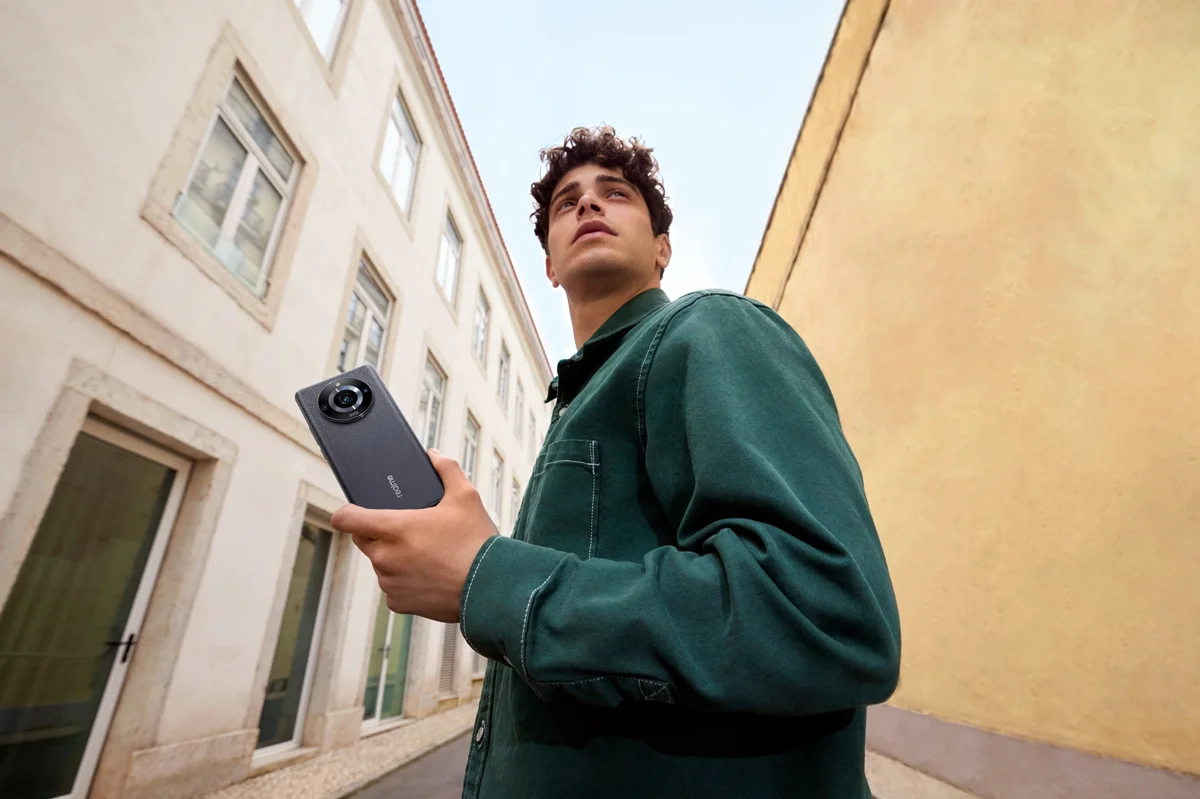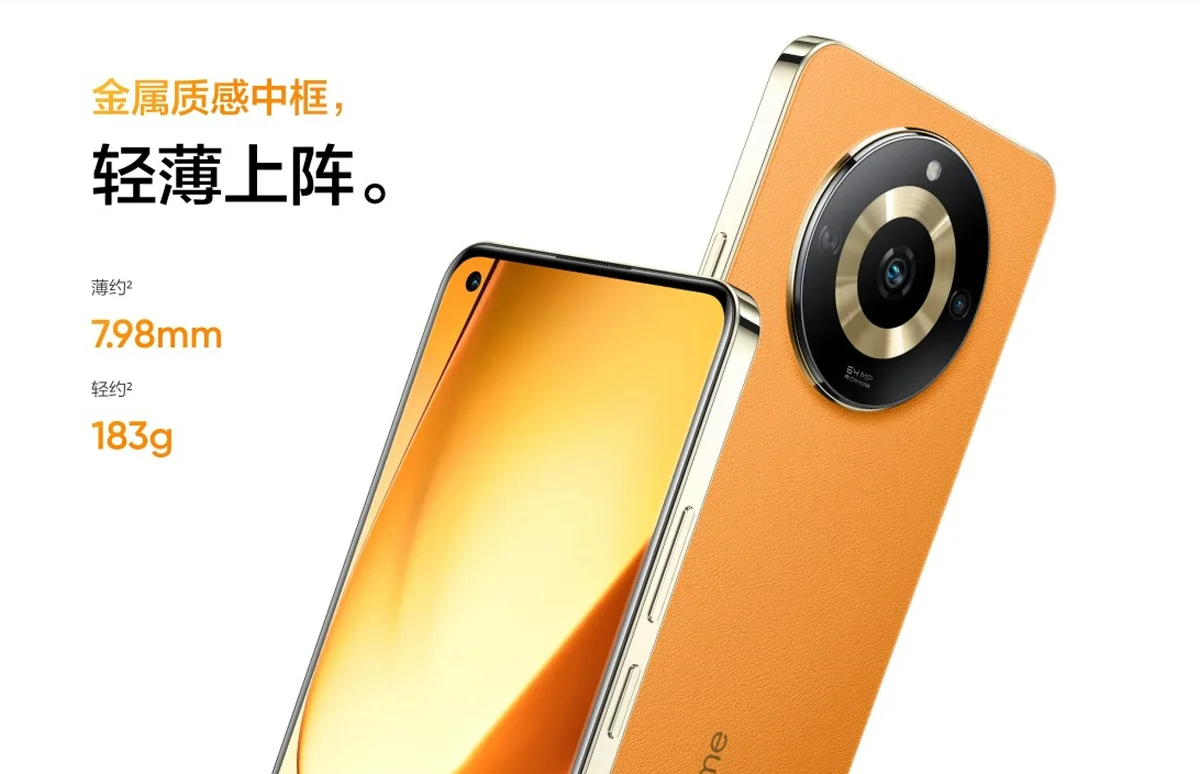This time around, realme has called upon former Gucci Prints designer Matteo Menotto to help design the aesthetics featured on the realme 11 Pro and Pro Plus models, which is said to be inspired by the Italian city of Milan. Both of which feature a faux leather rear panel with a woven strip that runs along its centre, and a large circular camera island on top. Colour options include beige, green, and black. The standard variant, on the other hand, comes with a simpler faux leather back, a smaller circular bump, flat edges, and is offered in orange or black colours. Starting with the top-end variant, the realme 11 Pro Plus is equipped with a large 6.7-inch curved AMOLED display with FHD+ (1080 x 2412 pixels) resolution, 1.07 billion colour output, 120Hz refresh rate, and 360Hz touch sampling rate. Under its hood is Mediatek’s latest 6nm Dimensity 7050 5G chipset, paired with a Mali-G68 GPU, 12GB of RAM, and up to a whopping 1TB of internal storage. Powering the device is a 5,000mAh battery with 100W fast charging support via USB-C. Additionally, it also comes with an under-display fingerprint sensor, Android 13 via realme UI 4.0, dual Dolby Atmos and Hi-Res Audio certified speakers, as well as NFC, Bluetooth 5.2 and Wi-Fi connectivity. Imaging-wise, the realme 11 Pro Plus comes with a rear triple camera setup consisting of a Samsung ISOCELL HP3 200MP primary, an 8MP ultra-wide, and a 2MP macro. It’s worth noting that its main camera sensor is the same one used on the Samsung Galaxy S23 Ultra. Meanwhile, housed within the cutout on the display is a 32MP selfie camera. Next, we have the realme 11 Pro, which essentially is identical to the Plus model in terms of design and most hardware specifications. The only few differences are its memory memory configurations, supported charging speed, and onboard camera sensors. More specifically, this particular variant starts with 8GB of RAM, up to 512GB of storage, and supports only up to 67W fast charging via USB-C. On its back is a dual camera setup consisting of a 100MP primary and 2MP macro, while in front is a smaller 16MP sensor for its selfie shooter. Last but not least is the vanilla realme 11 model which, as you might have guessed, comes with entry-level specifications. Starting with its display, this model is equipped with a smaller 6.43-inch flat AMOLED panel that features FHD+ (2400 x 1080 pixels) resolution, 16.7 million colour output, 90Hz refresh rate, and 180Hz touch sampling rate. Internally, the phone features a MediaTek Dimensity 6020 5G chipset, along with a Mali-G57 GPU, up to 12GB RAM and up to 256GB internal storage. Like its siblings, it too comes with a 5,000mAh battery, though fast-charging is limited to only 33W via USB-C. Other features include an under-display fingerprint sensor, Android 13 via realme UI 4.0, Hi-Res Audio certified loudspeaker, as well as NFC, Bluetooth 5.2 and Wi-Fi connectivity. In the imaging department, the vanilla realme 11 features a rear dual camera setup which comprises a 64MP primary and a 2MP depth sensor. Meanwhile, housed within the cutout on the phone’s display is an 8MP selfie camera. For the Chinese market, the all-new series is set to retail for a starting price of CNY 1,999 (~RM 1,287) for the realme 11 Pro Plus, CNY 1,699 (~RM 1,093) for the realme 11 Pro, and CNY 1,599 (~RM 1,029) for the vanilla model. While an exact date has not been determined just yet, realme Malaysia has confirmed that the smartphone line-up will be released locally “soon”. (Source: realme China [official website])




